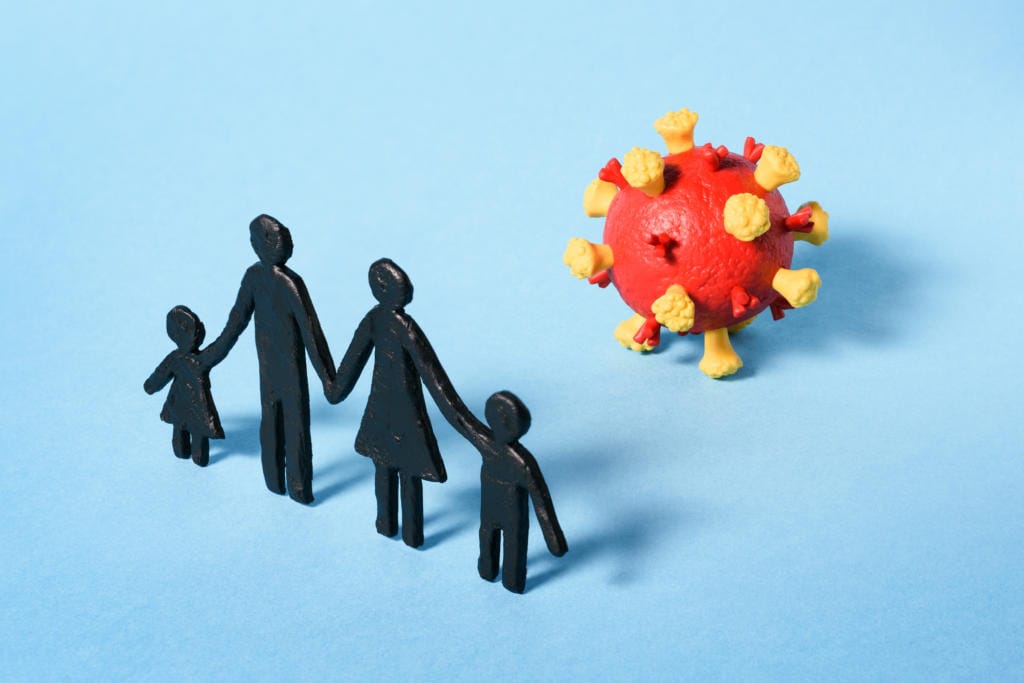When counties and states began to lessen COVID-19 restrictions earlier this year, concern grew about what more activity would mean for the spread of coronavirus.
Would eating at a restaurant be risky? Could you catch COVID-19 shopping at a store? Would people host large gatherings, despite restrictions against that?
Clark County Public Health coronavirus data from July through September helps paint a picture of how the virus spread locally over the summer.
Out of the 2,037 confirmed cases interviewed by Public Health in those three months, 1,016 cases, or just under 50 percent of cases, were linked to a likely source of coronavirus exposure.
Sometimes investigators can’t identify a source of exposure for a person, because that person has not had contact with a known case and did not have a connection to a site where Public Health knows transmission is occurring, according to an email from Clark County Public Health Information Officer Marissa Armstrong.
Sometimes people can’t recall where they have been, Armstrong said, or don’t want to provide information. Family members also occasionally have to fill in gaps if a patient is hospitalized. Those occurrences can lead to missing data.
Even with the gaps in information, there are still certain trends that stick out and can be informative.
Community exposure
More than half of coronavirus transmission from July through September occurred outside the household in Clark County, according to the available data.
In July, 204 cases, or 45 percent of cases with an identified likely exposure, were traced to household transmission, which means from one household member to another household member.
In August, those numbers landed at 157 cases, or 47 percent of cases with an identified likely exposure. In September, the county recorded 235 cases that likely contracted through a household exposure, good for 46 percent of the total cases with an identified likely exposure that month.
That means the majority of Clark County’s COVID-19 transmission, according to the available data, has been happening outside the home.
That’s a concerning statistic to Clark County Public Health Officer Dr. Alan Melnick.
Melnick explained that after roughly the first month of the measles outbreak last year, 87 percent of measles transmission occurred within the household.
That meant people were isolating when they got sick, and not further spreading measles outside their home.
The COVID-19 data shows community spread is still prevalent in Clark County.
“It’s not like COVID-19 is knocking on your door and saying, ‘Can I come in?'” Melnick said. “Someone has to bring it into the home. That’s why we’ve been asking people to avoid gatherings.”
Bars and restaurants
While people might be most afraid of large parties or dining at a restaurant, Clark County’s data from the past three months shows that the second-biggest spreading spots right now (behind household transmission) are small, private gatherings of 10 or fewer people.
In the past three months, 51 cases have been traced back to restaurants, bars, retail and grocery stores, places where there are tight restrictions in place. That’s an average of 17 cases per month.
Armstrong said the restrictions have likely played a role in lower case counts at restaurants and bars, as well as the fact that many people were eating and drinking outside this summer, where it’s harder to spread the virus.
She also noted that it can be difficult to trace cases back to those places, given that you have to connect a known case at the restaurant or bar to the case who is being investigated.
A sneaky spreader
There have been 21 cases tied to public and private gatherings of more than 50 people and another 43 cases linked to public and private gatherings of 11 to 49 people.
But there have been 196 cases connected to private social gatherings of 10 or fewer people, a number that is more than triple the amount of cases tied to gatherings of more than 11 people over the last three months.
In July, those smaller private social gatherings made up 21 percent of the cases with an identified likely known exposure; in August it was 16 percent of cases; last month, it was 20 percent of cases.
The data does not mean that large gatherings are safer than small gatherings, Melnick said, but it does likely indicate a couple important things.
First, small private gatherings are happening much more frequently than large ones. Also, people are less likely to follow protocol in smaller, private, more intimate group settings.
You might be less likely to wear a mask. You might be less likely to keep distance or avoid physical contact. You might be more likely to share food.
“Gatherings continue to be a leading source of exposure,” Melnick said. “Large gatherings make news, but there’s a lot of small gatherings going on.”
If you have a small gathering, it’s important to continue to mind the same guidelines that you would if you went out in public.
Melnick wants people to keep that in mind as the weather worsens and more people hang out indoors, where coronavirus is spread more easily. Keep gatherings as small as possible, wear a face-covering and keep your distance from others.
“I’m not suggesting we all live in caves forever,” Melnick said. “But this is going to be more of a problem in the fall. We’re still in the first wave. We never got out of it. I’m really concerned about what is going to happen as more people spend more time indoors.”




